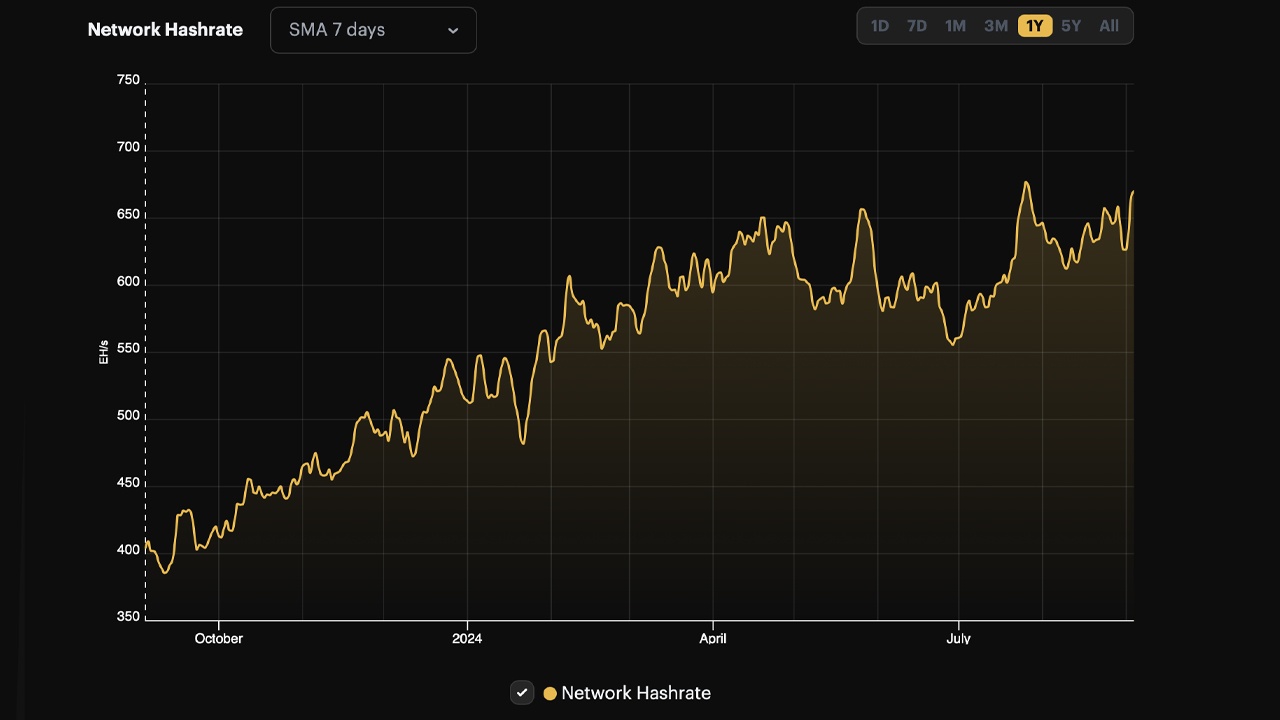Despite a bump in mining difficulty and a drop in hashprice, Bitcoin’s total hashrate is still on the rise. In fact, on Wednesday it’s just 12 exahash per second (EH/s) away from reaching its peak of 677 EH/s, which was recorded on July 25.
Bitcoin Mining Operations Push Through Lower Hashprice, Nearing Record Hashrate
On Aug. 28, 2024, Bitcoin’s mining difficulty increased by 2.99%, climbing from 86.87 trillion to 89.47 trillion, making it tougher for miners to uncover blocks. Simultaneously, bitcoin’s price has dipped 1.5% over the past week, even after a brief uptick on Sept. 4.
At the same time, miners are still facing low earnings, with the current value of 1 petahash per second (PH/s) of output per day sitting at $41.69. However, this is a significant improvement from Aug. 5, when the price per petahash per day was 16.51% lower, coming in at $35.78 per PH/s.
While bitcoin miners are grappling with low revenues and near-record difficulty levels, the industry’s hashpower output has been nothing short of extraordinary. As of 2 p.m. EDT on Wednesday, the total hashrate is coasting along at 665 exahash per second (EH/s), just 12 EH/s shy of its all-time peak.

If bitcoin’s price improves in the coming week, the hashrate could easily shatter its previous record reached on July 25. However, the rising hashrate and quicker block intervals may trigger another difficulty adjustment increase projected on Sept. 11, 2024.
As of 2 p.m. EDT on Sept. 4, the estimated difficulty is set to increase by 2.2%, though that could change in the next five and a half days. Of the 665 EH/s logged on Wednesday, Foundry contributes 201.25 EH/s, while Antpool commands 167.47 EH/s of SHA256 hashpower.
This afternoon on Sept. 4, around 55 recognized mining pools were powering the Bitcoin blockchain. A climbing hashrate is an encouraging sign that miners are weathering the recent revenue slump, thanks to several key buffers.
These include the hefty fees collected on the day of the fourth halving, the newly released cutting-edge mining gear delivering impressive terahash per second (TH/s), and stock sales available to publicly traded mining firms. The real question is, how long can these buffers sustain bitcoin mining operations if the downturn persists?
What do you think about the latest rise in overall hashrate despite the difficulty jump and lower revenues? Share your thoughts and opinions about this subject in the comments section below.
 news.bitcoin.com
news.bitcoin.com
